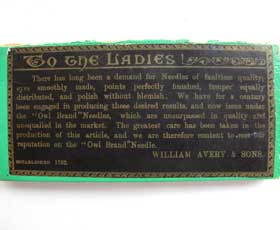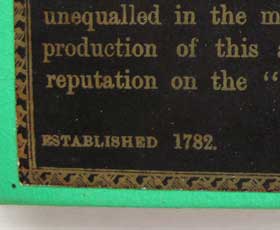Descriptions of W. Avery & Son from the 19th Century
The following articles were original researched in 2011 and were published in the book My Avery Needle Case Collection by Terry Meinke
in April 2012. No changes have been made other than adding additional articles from 1874, 1878, 1882 and 1885. The articles are divided into
sections to make it easier for individuals to access the information they are interested in. The sections are:
Perry & Co.'s Illustrated Price Current – October 1874
The Reliquary – July 1875
The Reliquary – January 1876
The Reliquary – July 1878
Text on a Pasteboard Needle Case packet – Probably from 1882
The British Trade Journal - June 1885
Pictorial Record of the Royal Jubilee Exposition - 1887
Perry & Co.'s Illustrated Price Current - October 5, 1874
WINDMILL NEEDLE-CASE
We are not aware that among the variety of needle-cases which the Messrs. Avery & Son’s have issued, invention has conceived a form of greater novelty than in this little gilt windmill. Its use is, of course, to hold needles, pins, or such small articles, but the spirited conception of the idea renders it ornamental. The windmill, of light gild metal, is architecturally complete to the sails or fans, tower, windows, doorway, steps, and pedestal, making a really useful domestic article almost artistic instead of common-place. It has, then, the merit to the trade of being out of the ordinary run of needle-cases, and worthy of a place among a lady’s nic-nacks.
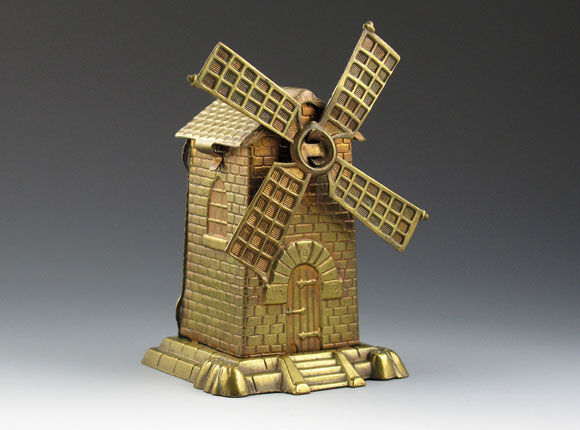
The Reliquary - July 1875
MESSR. W. AVERY AND SONS’ ORNAMENTAL CASES
There are some articles of daily and hourly use, and which are essential accompaniments of every household and of every female in those households, to which none of the principles of art can be applied. They remain plain and unadorned, and so will remain to the end of time. “Beauty,” we know, “when unadorned is adorned the most,” and that the intrinsic value of beauty is its excellence; therefore the beauty of the articles we allude to consists in their simplicity of form, their excellence of temper, their strength, and the ease with which they may be plied. But although the articles themselves cannot be adorned by art, their surroundings, and the cases in which they are contained, may be; and thus art comes to be applied to the commonest and simplest articles of one’s every-day handling. Needles and pins are not the most attractive of articles to an artist’s eye, and the man who set about decorating them, so as still to preserve their usefulness, would indeed have a task before him of no little magnitude. Messrs. Avery and Son, who are among the very best of manufacturers of these delicate little implements, and produce them by the million, have hit upon the happy idea of wedding them to art in a peculiar and wonderfully appropriate manner, by the production of elegant cases of admirable design and of excellent mechanical arrangement, and it is to some of these that we purpose to call attention in our present chapter. The cases are among the most elegant adjuncts of the work-table, the drawing-room, or the toilet, which have come under our notice, and we predict that they will become almost as general as pins and needles themselves.
These cases are produced in large variety by their introducers, Messrs. W. Avery and Son, who appear to make some sixty or seventy varieties - all excellent in their way, and some presenting features of extreme beauty and of considerable ingenuity. One of these is a clever model of Shakespeare’s house at Stratford-on-Avon, three inches in height, in which all its external features are accurately represented. The roof of this house lifts up, and opens back with hinges, the front falls down, and the whole discloses an elegant cabinet arrangement of three drawers, the one filled with an assortment of needles, and the others with hooks and eyes, and pins, respectively; while on the top of the drawers are an enamelled thimble, and a reel of cotton, held in their places by a clever mechanical arrangement, the thread from the latter passing through the chimney top for drawing off. This “Ladies’ Companion” is strongly made enough to last a life time. Its every detail is beautifully modelled and finished both inside and out, and the whole is electro-gilt. It is, without exception, one of the most elegant and acceptable of presents. Another is a beautifully-formed golden wheelbarrow, admirably modelled in every part, and evidently filled to the top with a load of flowers. These flowers, which form the lid, lift up and disclose in the inside a goodly stock of pins and some packets of needles. It is elegant as an ornament, and useful as a toilet companion. Another is a boat, about four inches and-a-half long, charmingly modelled, and massively electro-gilt, which, opening in one part, is found to contain a cargo of pins, and in another to be freighted with those necessary adjuncts of the toilet-table, hair-pins.
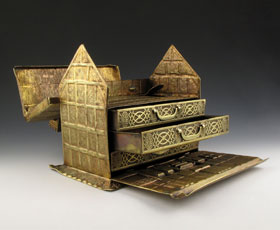
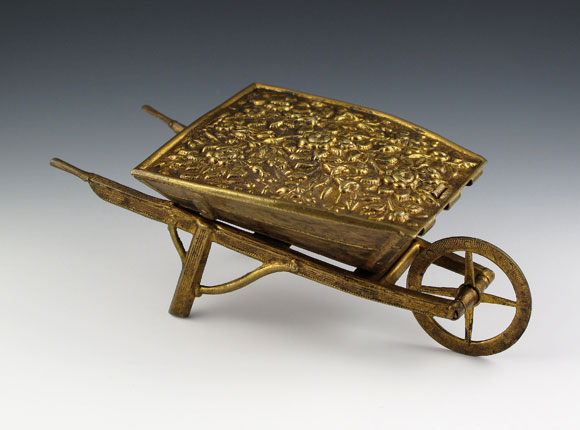
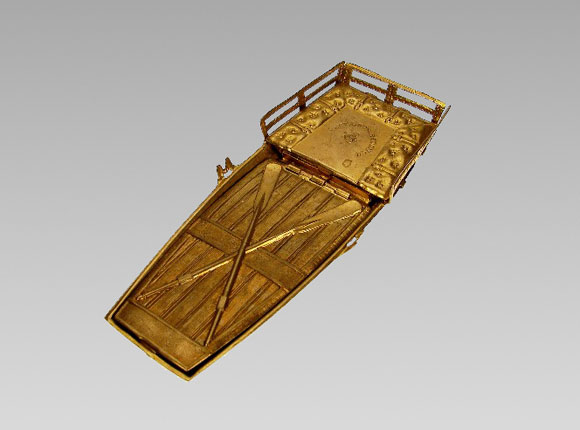
One of the cleverest in mechanical arrangement, as well as most elegant as an ornament, is a tiny gold windmill, of faultless execution, whose roof, opening with hinges, displays an assemblage of packets of needles, these, by turning round the sails, are lifted up as if by magic, so as to be brought ready for the fair fingers of the owner. The arrangement by which the needles are lifted is a clever but simple piece of mechanism. Another needle case is a pair of scallop shells, and by turning the hinge a plate slides out from the inside, on which the packets of needles are ranged ready for use. Another is a horse shoe and hoof, beautifully modelled; another a butterfly — true to the life in form and position — carrying needles beneath its wings.

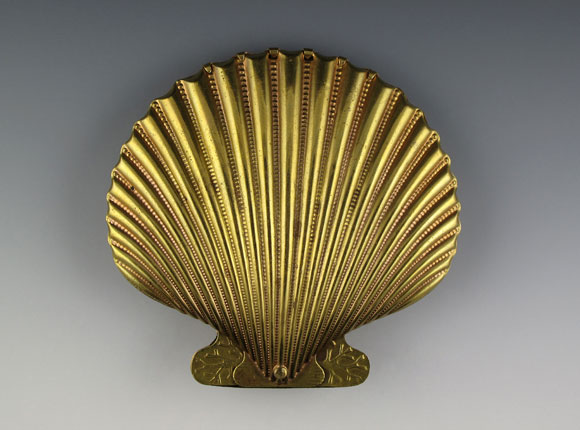
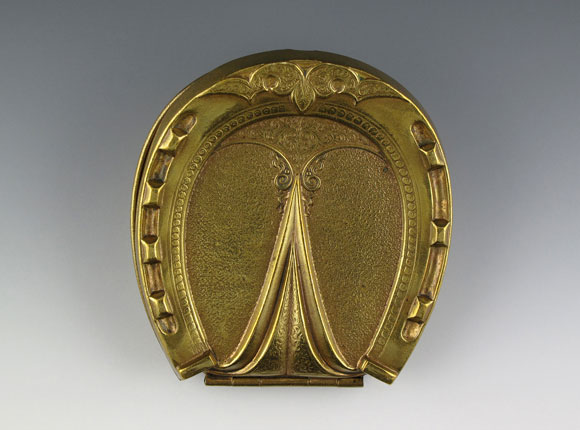

A strikingly novel design is a shield bordered with gold, bearing a stag’s head of silver, on an azure ground. In this the stag’s head lifts up, the azure cloth is removed, and discloses a selection of needles, in charming little packets, ready for use. This is one of the prettiest of all the pretty designs issued by this firm. Another chef-d’ouvre of simple mechanical skill wedded to pure art, is the “Quadruple Golden Casket,” in which by a touch only, the needles are raised up to the hand without the slightest trouble. It is a charming arrangement.
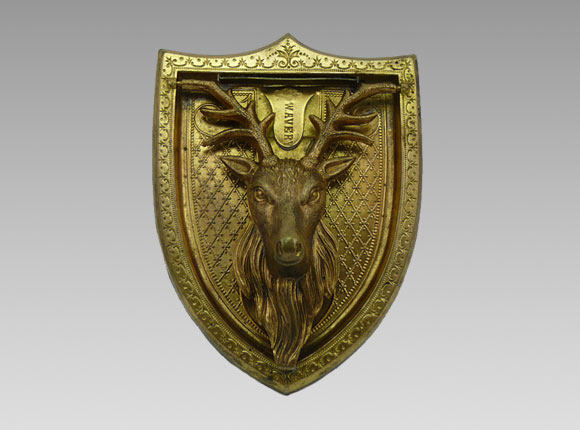
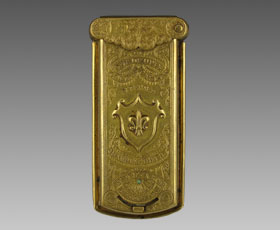
It is not necessary, however, to enumerate or describe more. Those we have named are but a tithe of what Messrs. Avery, in their never ending desire to put elegant novelties into the hands of our fair countrywomen, have produced, and they are all manufactured with equal care, and with faultless finish even in their minutest detail. Messrs. Avery deserve the highest praise for their efforts — their successful efforts — to apply the true principles of artistic design, and of mechanical appliance to these articles of hourly use. They are one and all good; and, so far from being simply flimsy toys, they are made for use, and for wear as well as for ornament. Messrs. W. Avery and Son are among the oldest of needle makers in the kingdom, their works dating back to nearly a century, and it is much to their credit that they should now become the pioneers in the department of art-cases, as they have hitherto been in the articles which those cases are intended to hold. We quote the following from the reports of the Vienna and Paris Exhibitions to the Birmingham Chamber of Commerce: —
“The nearest approximation to the lightness of small ornamental work in metal, as made in Austria, Germany, and France, will be found in the brilliant little needle-cases sent by a needle manufacturer at Redditch (Mess. W. Avery and Son). They present a very considerable approximation to the light, elegant sparkling things which foreigners are so successful in producing, but the dies in which these are produced, it is evident, are very superior in sharpness, the fitting better, the finish very brilliant, and the ‘Cam,’ or other motion which on opening the case elevates the needles, is in such cheap work exceedingly ingenious and well worked, better than such work would be if produced by Continental workmen."
“At the Paris Exhibition it was demonstrated beyond all dispute, that for needles combining quality of material, clearly pierced, and well-fashioned eyes, elasticity of temper, points, etc., the productions of this country are unequalled. Satisfied with their triumph on that occasion, attention appears to have been given by one Redditch firm (Mess. W. Avery and Son) to the creation and development of a new feature in connection with the needles, viz., the construction of elaborate, ingenious, and ornamental pin cases. The stall of this firm in the Exhibition looked more like a gilt jewellery depot than anything else. The idea carried out by them is capable of extensive application to other trades, though all the credit is due to them in its application to their own trade. We are all familiar with the ordinary papers in which needles are wrapped, packed, and sent away; how to open a packet was probably the preliminary to scattering them on the floor! Now by some twenty-seven different contrivances, patents, and registered designs, Mess. W. Avery and Son have created a new industry in the Midland district, and added to the ladies’ work-table an elegant and useful object. These cases are strong, in addition to being ornamental; they demonstrate the feasibility of an article of commerce being made, and that extensively, as a covering or case for something in universal use, of little cost in itself, while the case will be, perhaps, double or treble the price of the article it contains. The idea was a happy one, and has succeeded, doubtless, beyond all expectation.”
“The ingenious cases, with easy motion for raising the needles, or shutting them up again, are simply beautiful in their action, but are so numerous and varied that a description of their various ‘actions’ would read like a book of the specifications of patents. The novelties are now so well-known that to enumerate them is sufficient. The ‘Hedgehog’ pin-case costs a thousand per cent, more than the pins it contains, a gilt ornament to represent the animal, the pins stuck in perforations left in the back. The ‘Butterfly,’ with needles concealed under the wing, and there are about twenty- five other varieties, all differing from each other.”
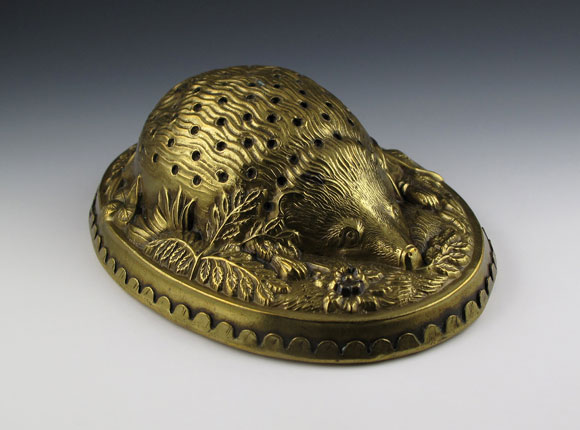

The Reliquary – January 1876
MESSRS. W. AVERY AND SONS’ “EASEL” NEEDLE CASE
In a former article we wrote at some length upon the very artistic and beautifully designed needle cases of Messrs. W. Avery and Sons, of Redditch. Since then this energetic firm, with its usual good taste, has produced a new and very tasteful design, which they have kindly forwarded to us. It takes the form of an artist’s easel, upon which rests a charmingly modelled portfolio. The front of this on being unfastened at the top, falls down and displays, in place of sketches, a selection of packets of needles, such as will delight the eyes and employ the busy fingers of our fair friends for many a month to come. The easel and its useful load are beautifully ornamented, and being finely and substantially made, and trebly gilt, will last for years, and always be a pleasing object for the work table, drawing room, dressing table, or elsewhere. Messrs. Avery are imbued with a right spirit in all their Art-productions; and all their “cases” are characterized with good taste, strict utility, and faultless workmanship.
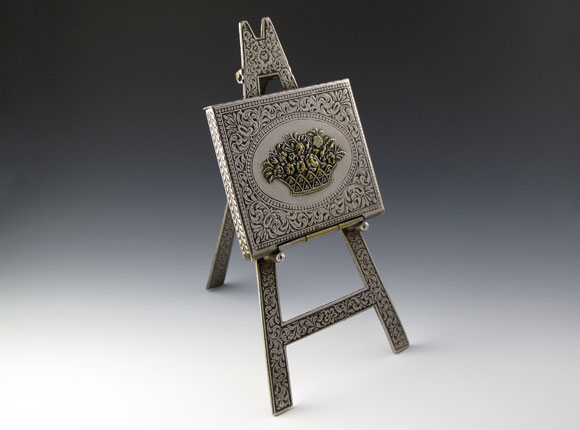
The Reliquary - July 1878
MESSRS. AVERYS' NEEDLE CASES
Messrs. Avery & Son, of Redditch, to some of whose beautiful Art-productions we have already in these columns, on more than one occasion referred, have recently produced some entirely new and perfectly original designs in Metal-work Needle Cases, which merit more than a passing notice One of these is the “Cleopatra’s Needle;” and both from name “Needle," and from form, nothing could well be more appropriate for the purpose than this obelisk. By a clever little arrangement of hinges, on raising the top, the four sides fall down in form of a cross and discover the packets of needles inside. It is a pleasing and clever, as well as elegant article. Another pretty trifle is the "Stile Needle " - a rustic stile with mile-stone at the side, which opens and contains a goodly supply of needles. Another is an exquisitely formed covered hand-cart, which runs as evenly on its wheels as if made by the Queen's coach builders, and is as nattily ornamented as if designed by their chief painter; it holds a liberal supply of needles and pins, and forms a charming little receptacle for any knick-knacks. Another is a pretty little Camp Kettle, of excellent proportion, and delicately fluted over its principal surface; and the next is a miniature Coal Scuttle, charmingly arranged so that the lids lift up automatically and disclose the inward treasures with which it is stored. The whole of these are splendidly and thickly gilt, and richly decorated. They are among the most elegant of trifles, and form the prettiest and most acceptable of gifts.
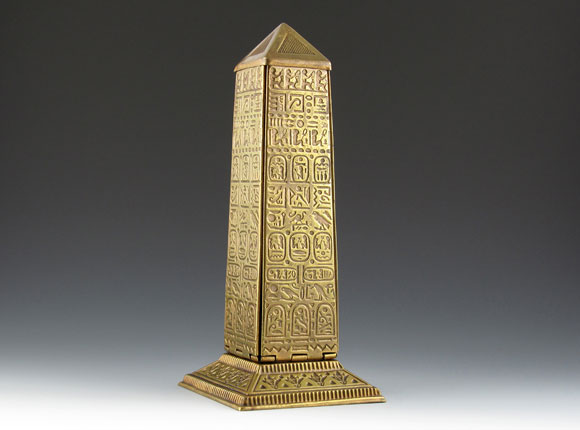
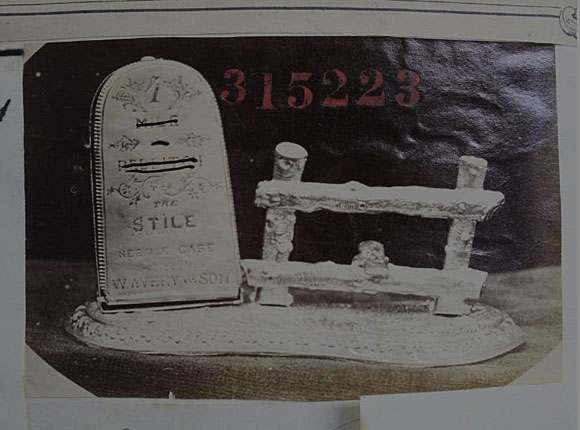
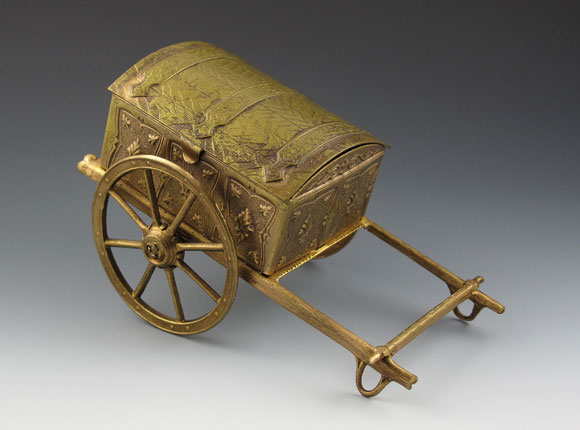
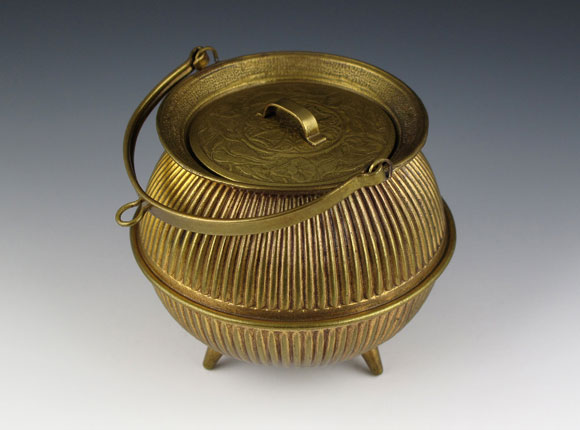
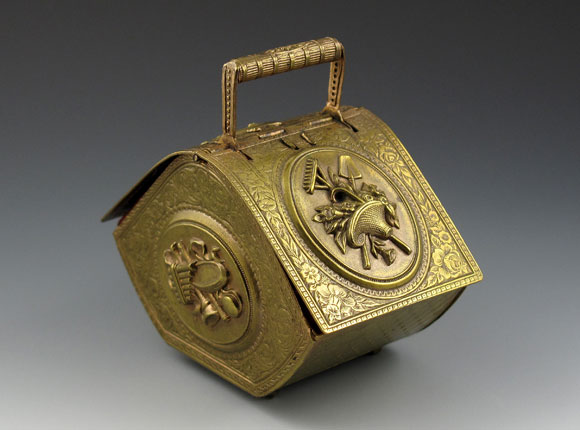
Text on a Pasteboard Needle Case Packet - Probably from 1882
TO THE LADIES
There has long been a demand for Needles of fruitless quality, eyes smoothly made, points perfectly finished, temper equally distributed, and
polish without blemish. We have for a century been engaged in producing these desired results, and now issue under the “Owl Brand” Needles,
which are unsurpassed in quality and unequalled in the market. The greatest care has been taken in the production of this article, and we are
therefore content to rest our reputation on the “Owl Brand” Needle.
Established 1782 William Avery & Sons
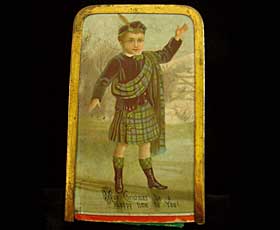
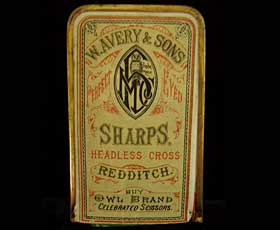
Click on the photo on the left to see a larger version of it.
The British Trade Journal - June 1, 1885
THE ANTWERP INTERNATIONAL EXHIBITION - MESSRS. AVERY & CO., REDDTICH
A prominent position is occupied by this firm, who exhibit a collection of needles and pins and needle-cases in new and attractive designs. Messrs. Avery have a needle-factory at Redditch, and another, where they manufacture cases, at Banbury. They hold numerous patents for the invention of cases. Among their latest novelties are needle-cases in the form of valentines, others in the shape of horseshoes, and others again represent the Arc de Triomphe in Paris, and the leaning tower of Pisa. Many of these form useful and permanent ornaments, not less remarkable for the ingenuity with which they are conceived than for the skill and artistic treatment with which they have been worked out. Messrs. Avery & Co. are well known as manufacturers of needles possessing all the high qualities which have made this class of British manufactures celebrated throughout the world.
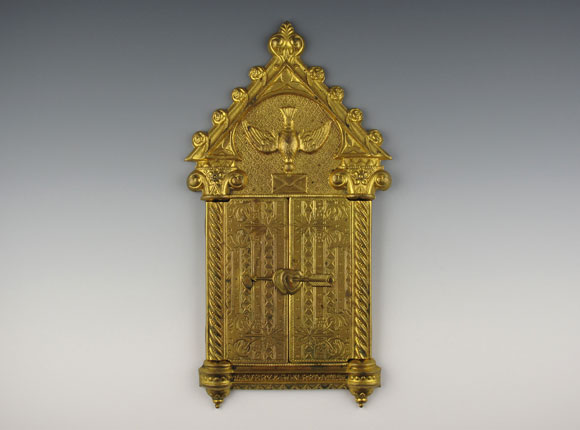

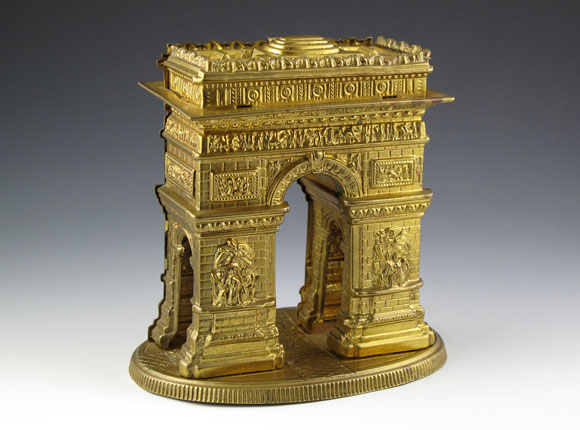
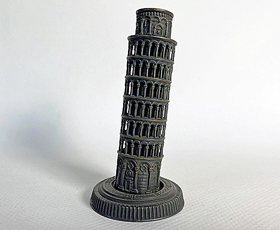
Pictorial Record of the Royal Jubilee Exposition
MANCHESTER 1887 – HANDICRAFTS
Near to this exhibit was a little machine, at the needle and pin stall of W. Avery and Son, of Headless Cross, Redditch, which had a special attraction for the ladies. This curious little apparatus, upon which no small ingenuity had been expended, was engaged all day long in sticking pins in rows upon paper; the operation being not a little puzzling until one had an opportunity of inspecting the interior works. Thousands of pins were poured into a hopper at the top, the attendant rapidly getting them straight and in order with a small brush; they then slid down a series of grooves in a perpendicular position, a blade came down and separated a row, and the machine stuck them into the paper. The whole was done very rapidly, and saved an immense amount of labour.





